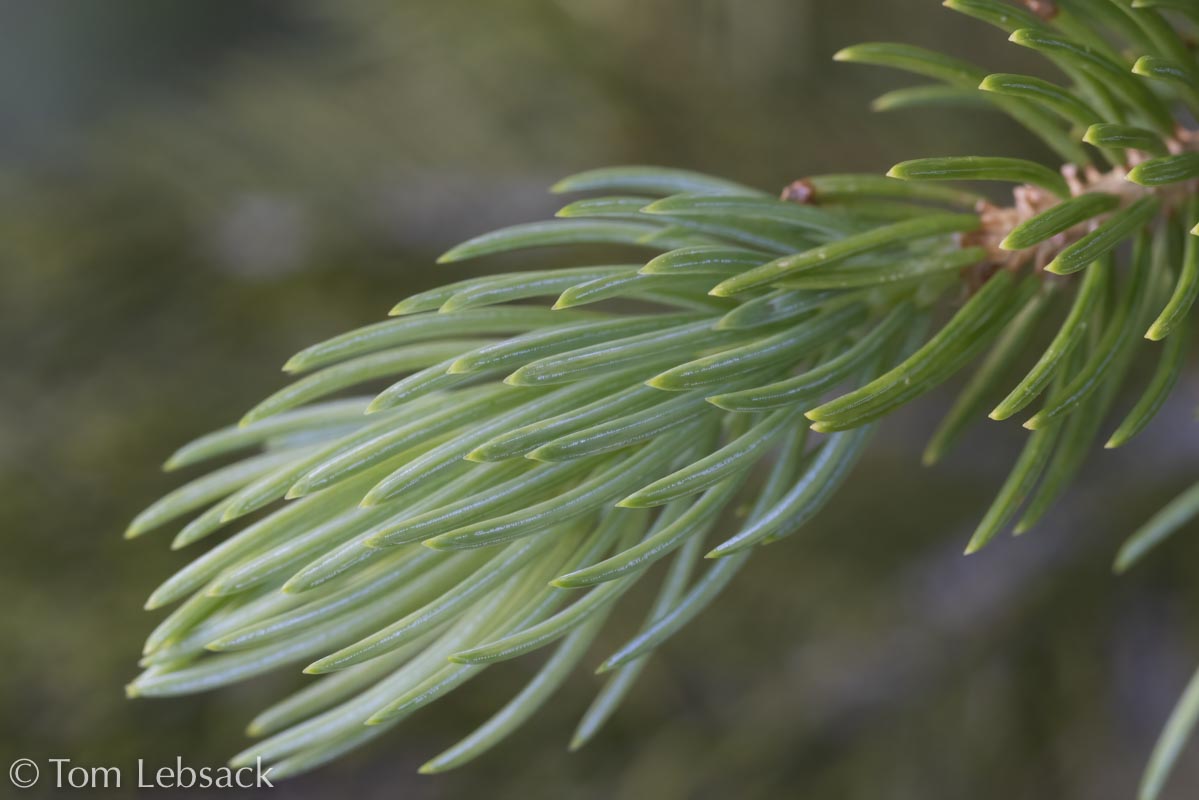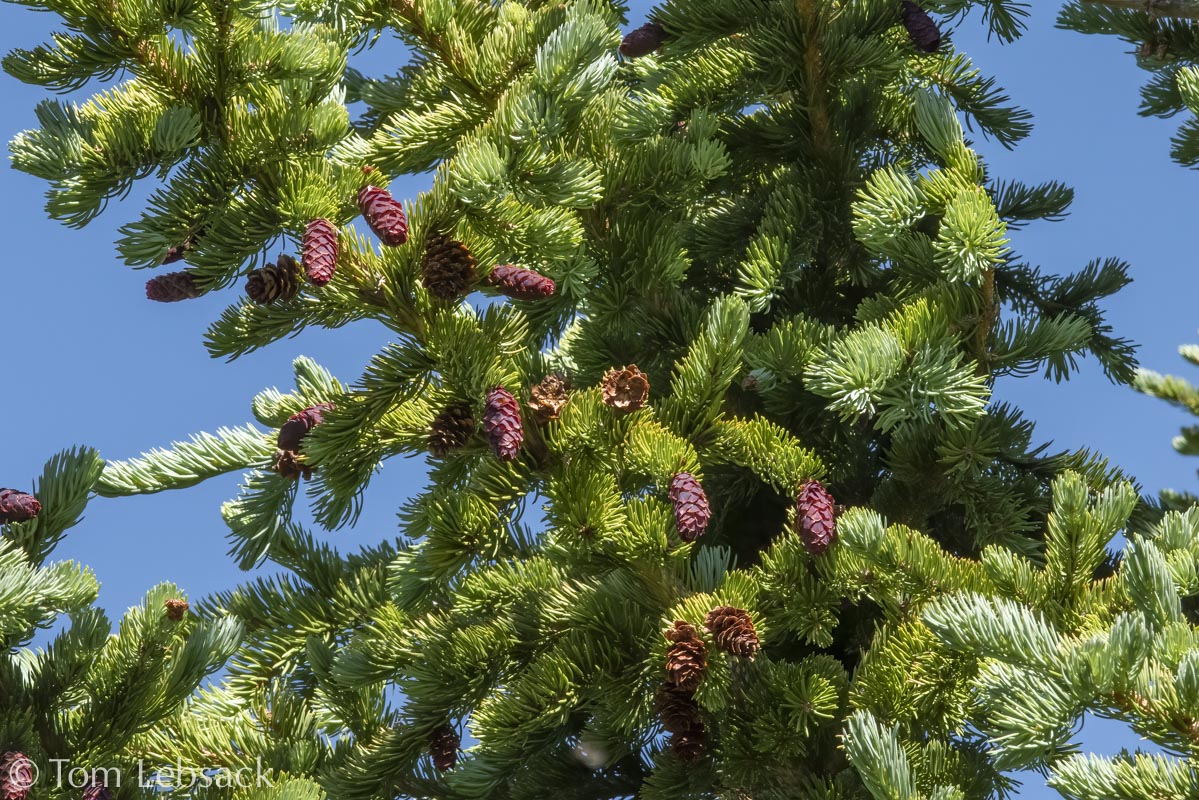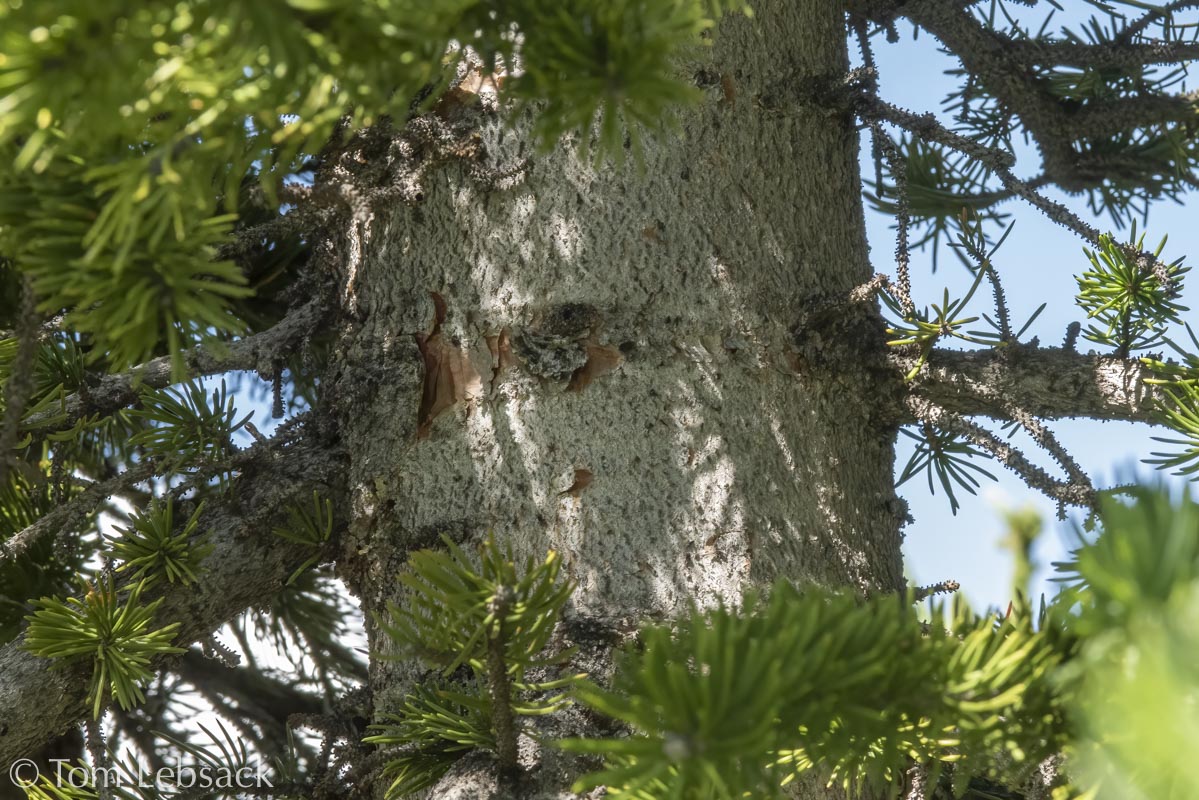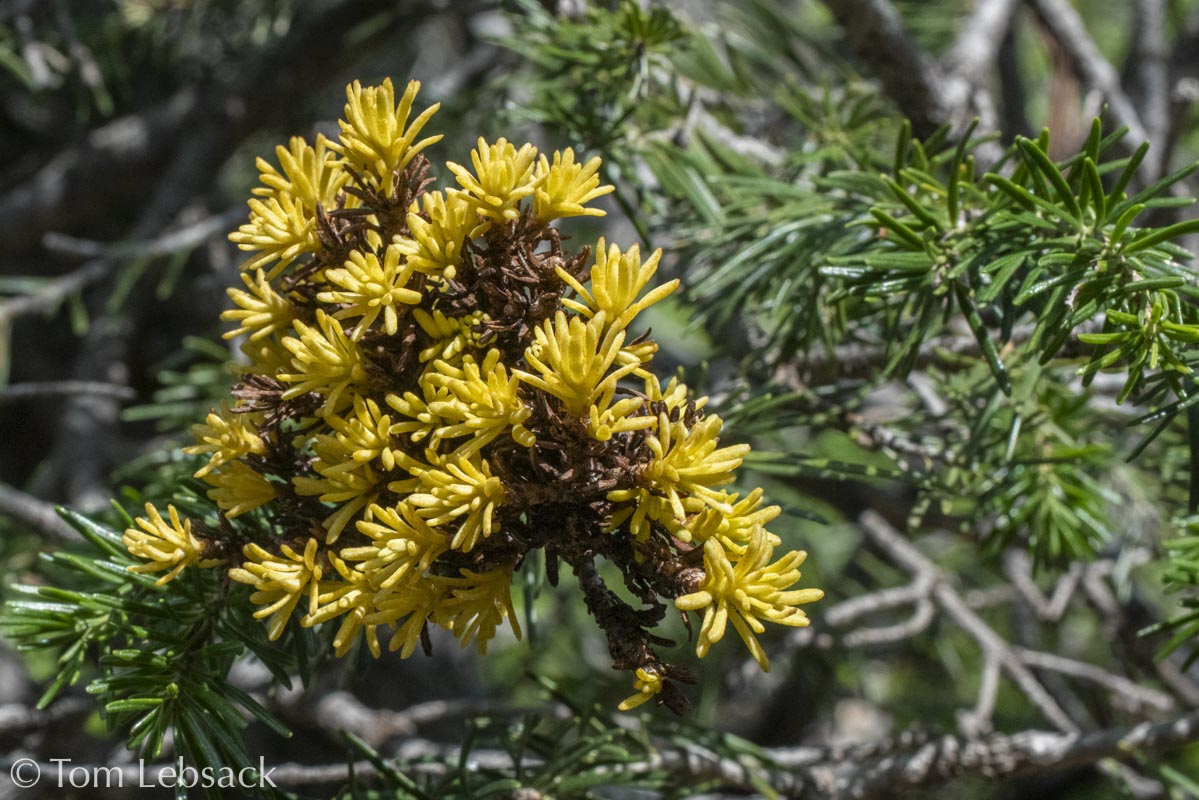Picea engelmannii var. engelmannii
(Engelmann Spruce)
| Scientific Name | Picea engelmannii var. engelmannii | USDA PLANTS Symbol | PIENE |
| Common Name | Engelmann Spruce | ITIS Taxonomic Serial No. | 822704 |
| Family | Pinaceae (Pine) | SEINet Reference |
Click Here |
| Description |
Life zones and habitat: Montane to alpine (8500 to 12000 ft.); well-drained, loamy sands and silts, and clay soils. Plant: Long-lived, very large evergreen conifer tree, growing to 45 to 150 feet with trunks 15 to 40 inches in diameter; mature trees have a narrow, spire form and short, compact branches, spreading horizontally to somewhat drooping; bark is very thin, grayish-brown on young trees becoming purplish brown to reddish brown. A small tree at upper subalpine elevations and forming krummholz at treeline. At higher elevations in CO the trees can grow to be very old, 350 to 600 years old. Needles: Needles are single and spirally arranged, four-sided, with pointed tips that are not particularly sharp; deep bluish-green with whitish streaks, somewhat greyish when young; 0.8 to 1.2 inches long; needle buds are small, about 1/4-inch long and orange-brown. Cones: Male and female cones on same tree, female in the upper portion and male in the lower; male cones often purplish when young becoming yellow at maturity; female cones purplish brown to brown, 1.5 to 2.4 inches long and hanging down (pendant). References: "Flora of Colorado" by Jennifer Ackerfield, "The Alpine Flora of the Rocky Mountains" by Richard W. Scott, Fire Effects Information System and US Forest Service. Note: One of the images shows a spruce branch infected with Chrysomyxa arctostaphyli, Spuce Witch's Broom Rust, a fungal disease that affects Blue and Engelemann Spruce. There is more information at iNaturalist and here. |
BONAP Distribution Map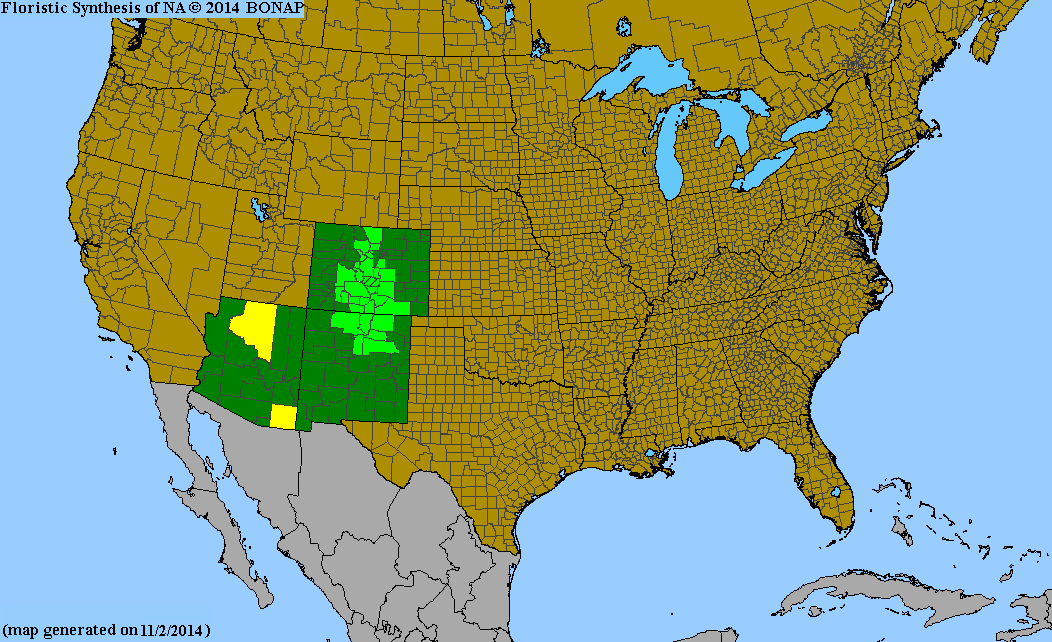
Map Color Key |
Colorado Status: Native |
© Tom Lebsack 2025
Banner photo: Castilleja rhexifolia and a brewing storm over the San Juan Mountains
I try to provide accurate, up-to-date, and relevant information, but cannot guarantee the completeness or accuracy of any information presented on this website. I use authoritative references to insure high standards of accuracy and review and update the information frequently.
